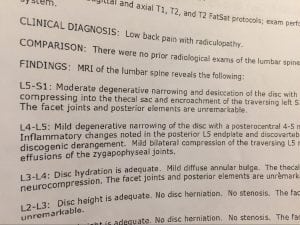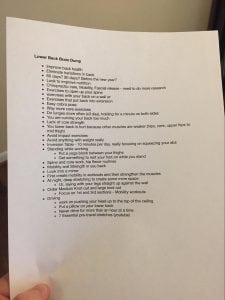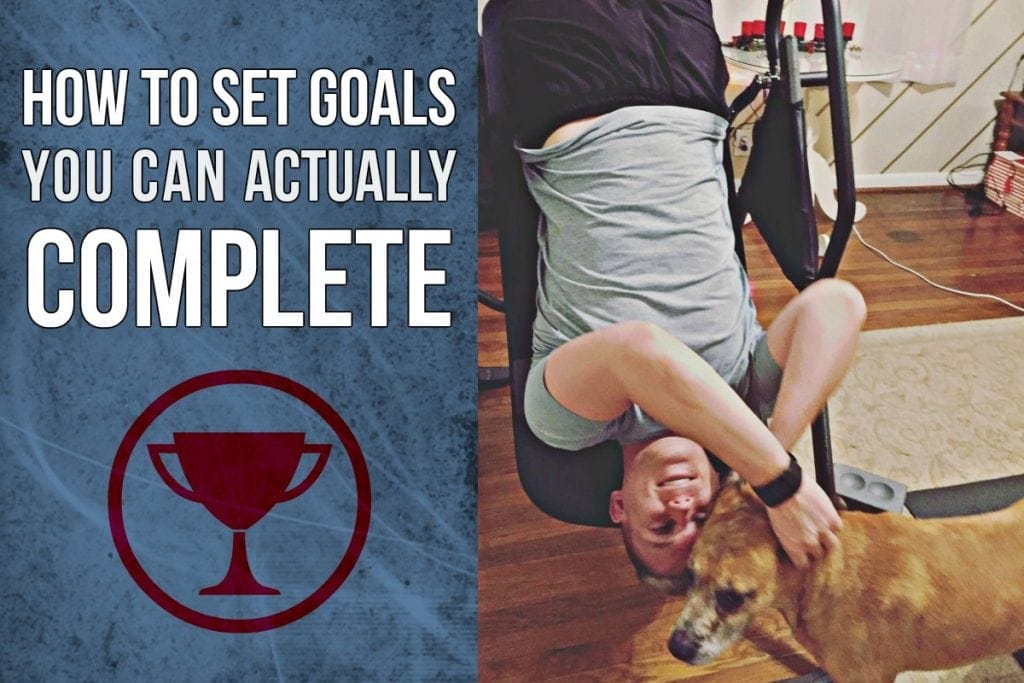A guest post By Scott A. Bradley
Whenever people ask for my help setting goals & how to achieve them, I get a sneak peek of their goal process. And if we’re being honest with ourselves, it’s not goal setting that screws us up.
Setting goals is easy. We all have big dreams and big things we want to accomplish in this world. I’m pretty sure I’ve never met anyone who wouldn’t want 6-pack abs or to make more money.
The real challenge for most people is not setting goals, but actually hitting them. If you’re like 92% of the population (which hopefully you are not), you set a goal at the beginning of the year, tell everyone about it, and then hope it comes true. But hope is not a strategy. Without a plan, your goal is just a dream, a wish, something that will most likely never happen. Unfortunately, this is how people set out to achieve their big goals in life.
Over the last few years helping countless people with setting goals, I’ve found out what works and what doesn’t work. Through that work, I’ve developed a process for goal setting that has helped people tackle goals they once thought were impossible. It’s a simple framework, but powerful when applied.
Goal Setting 101
A goal, at the most basic level, is a result you expect to achieve through a specific plan. Goal setting, on the other hand, is the process of identifying, designing, and establishing that goal.
Like I said, goals are easy to make. We all have goals. Where we get tripped up is the actual process for achieving that goal. A poor design can lead to poor results. So before you get started, here are a few rules:
2. Goal setting is a mix of art and science
There are specific rules you must follow (science) but if you don’t add in your personality (art), then your goal could easily fall into the “should have” pile of life. You must have a balance of both for a goal to succeed.
3. Know what type of goal you are looking for: positive vs. negative
Positive goals are improvements you want to make in your life: make more money, build a better relationship, improve flexibility, etc.
Negative goals are things you want to get rid of in your life: get out of a toxic relationship, quit your underpaid job, lose 20 pounds, etc.
Now that you have the ground rules, let’s dig into the 6-step goal setting process which can help you hit your big goals this year. In fact, I used these same steps to tackle a health issue recently. To help you better understand, I’ll be using my health goal as an example of how to approach the process. So let’s get started with where I screwed up…
This past October, my back really started hurting – a lot. I didn’t understand, I hadn’t changed my routine in months. I was running, lifting, practicing yoga, everything I thought I should be doing to stay fit.
I visited a chiropractor to have myself checked out and nothing could have prepared me for my results. According to him, I had the back of a 60 year old. He recommended that I get an MRI to make sure there wasn’t anything else going on. 2 weeks later, I learned that I had 2 herniated discs on vertebrates L4 and L5…at 27 years old. WTF.

My chiropractor’s recommendation was simple: spinal decompression therapy for a small fee of $4,000. Yeah, I don’t think so.
I knew there was another way, but rather than just search for a random solution, I decided to set a goal first.
In this case, I created a negative goal, or a “holy shit I have to fix this now” kind of goal. To appropriately quote Aristotle:
“The aim of the wise is not to move toward pleasure, but away from pain.”
Step 1: Start with a Brain Dump
When creating a goal, start with a brain dump. A brain dump is basically writing everything down that you want to accomplish with this goal. James Altucher teaches that “if you can’t come up with ten ideas, come up with 20 ideas.” In other words, get all your ideas onto a page, including the stupid and ridiculous ones. By doing this, you have a much higher chance of coming up with some great ideas.
Here’s the brain dump I did for my goal.

Step 2: Write out a Goal Statement
After the brain dump, you can now begin the first piece of the goal structure: your goal statement.
While most people will tell you to set SMART goals, I have found that setting broad goals with SMART habits and measurable deadlines is way more effective. Let me explain:
If your goal is to improve flexibility, the SMART goal would be:
I will take a yoga class at my health club on Monday and Wednesday evenings to improve my flexibility so I can touch my toes while standing up straight by April 12.
On paper, this goal looks great but I would say it’s lacking a few key pieces:
- It has zero emotion. I got bored just writing that sentence, do you really think it’s going to motivate me at all? Probably not. Your goal statement should empower you and make you say: Hell yeah, I’m going to crush this!
- It’s not personal. This statement doesn’t say WHY it’s important to you. Make it personal. A better goal structure has your purpose embedded inside, allowing you to deeply connect with your goal every time you read it (I’ll show you how to do that in a minute).
- It lacks detail. SMART goals supposedly have all the details you need to accomplish your goal but it lacks the most important one: Exactly HOW are you going to accomplish it? What are the milestones? What are the habits you need to adopt? What equipment do you need to buy? And so on.
- Doesn’t allow for being goals. What if your goal isn’t something you want to do, but someone you want to become? SMART goals don’t have the flexibility for being goals, which can be just as powerful.
For all you grammar geeks, the statement should be written in the future perfect tense. This is formed by:
“subject” + “am/will” + “have/be”
Instead of saying:
“My goal is to lose 10 pounds by June.”
It should say:
“I am 185 pounds strong, feeling lighter and healthier than ever.”
Notice the emotion and connection between the two sentences: How does adding that emotion make you feel? It feels a bit different than just losing 10 pounds, right?
Now that you have your goal statement, let’s add the rest of the ingredients to the formula.
Step 3: Develop a Powerful Why Statement
One of the biggest pieces that traditional goal setting leaves out is the emotion behind the goal. Obviously you know why you’re doing it, but writing it down makes it even more powerful. I have seen significant results from adding this piece into the goal structure because it makes a big difference in how you connect with your goal.
If you don’t have a compelling WHY you won’t have a compelling motivation to keep going when things get tough or you hit an obstacle. This is why people who go on vacations are actually more productive; they have a compelling reason to work hard and get more done throughout the year.
Ask yourself these questions when creating your why statement:
- Why is this goal important to me?
- What would it look like if I accomplished this goal?
- (i.e. Would I be healthier? Happier? More flexible?)
- What would it look like if I didn’t accomplish this goal?
- (i.e. Would I gain weight? Would I say unhappy?)
- Who else am I doing this goal for? Is there something bigger than myself at stake?
- (i.e. family, friends, the environment, etc.)
Just like you did for the brain dump, write freely until you can narrow down what your true why is for this goal. Repeat it outloud to yourself (or your dog) until it feels right. This is the “art” part of the goal, so get creative and have fun with it!
Step 4: Make Your Goals Happen
Now let’s get to the real work: How the hell you are actually going to accomplish your goal. Here we are making our goals realistic and attainable. There’s no point in setting a goal that you don’t have a plan for.
I’m going to challenge you in this step to think about everything you will need to accomplish this goal. This might include research, monthly savings, new habits…literally anything you might need.
When I started to create a goal for my back, I literally wrote out everything I needed to do – from allocating money in my budget for the right gear (Inversion Table and KnotOuts) to what articles/blogs/books I needed to read to understand why my back was hurting.
This might seem like a ridiculous step but it’s super important to know what it will take to accomplish your goal. I’ve even noticed that simply thinking through the details makes my goal seem 10x simpler.
If I don’t have to constantly think about the next step, I’m more likely to keep going. That’s why following a workout video or taking a class can sometimes be more effective. You’ve already committed to the time, all you have to worry about is the next move.
After you have a comprehensive list, the next step is identifying what habits you need to build or learn to hit your goal.
Step 5: Create Habits That Stick (And Don’t Suck)
Probably the most important part of developing a strong action plan is knowing what habits you need to learn and implement to hit your goal.
The fact is that our results in life are because of the compounding choices we make day in and day out. Eating one burger won’t kill you, but eating one every day might. That’s why habits are such an important step in this process. If you don’t build the right habits, your chances of hitting a goal are slim to none.
Knowing that I wanted my back healthy again, I would need to implement mobility into my daily routine. It was a new habit for me, but was crucial for me to learn. So I wrote out everything I wanted to implement like hip flexibility exercises, using an inversion table twice a day, or practicing some yoga while at work. I then determined how much time each practice would take and then wrote them into my habits.

One of the mistakes that people easily make when starting new habits is not properly measuring them. If you don’t know where you currently are, how will you know when you improve? I highly recommend using The Way of Life app or checking out my template that I created here.
Step 6: Easily Track and Measure Your Progress
The final piece to developing strong goals is tracking and measuring your progress. You must inspect what you expect. Tracking your progress is absolutely essential…and what most people are missing.
Tony Robbins calls this the 2mm effect: When you think you are completely off track of your goals, sometimes the smallest shift could make the biggest difference.
I have found that the best way to track my growth is by implementing a weekly recap. I call this process Weekly Planning.
For me, Weekly Planning is about checking the progress I made the previous week, seeing what I didn’t accomplish, and making those 2mm shifts for the week ahead.
There are tons of templates and resources out there, but you can start with one that I created here.
Final Notes

Scott Bradley
When it comes to career design, Scott is the guy to go to. As a corporate professional himself, he enjoys helping other success minded professionals design and develop careers that matter. If he’s not reading, cycling, or doing yoga, he’s writing or traveling connecting with people from all over the world. ScottABradley.com



